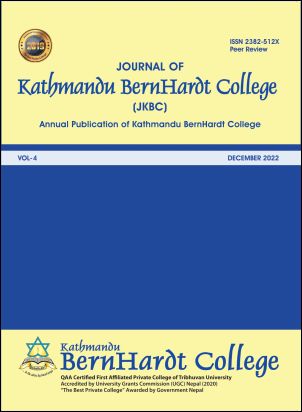Public Spending and Economic Growth: A Study of Nepal During Fiscal Year 1990/91-2020/21
DOI:
https://doi.org/10.3126/jkbc.v4i1.61424Keywords:
Government spending, Impact, Descriptive, Economic growth, RevenueAbstract
This paper investigates the connection between government spending and economic growth: A study of Nepal from F/Y 1990/1991 to 2020/2021. During the study period, Nepal's government spending increased significantly. The trend of government spending in Nepal seems to be centered on routine expenses and continually expanding the country's budget deficit. Nepali government has traditionally used its potential for government expenditures less efficiently, as evidenced by the data. The budget imbalance of Nepal has been growing in line with the country's developing economy. The aim of this study is to investigate the effect, trend, and relationship between government spending and economic growth using conventional ECM. Both descriptive and analytical research techniques have worked well with secondary data. The study's findings show that government spending had a significant impact on Nepal's economic growth during the study period, and they emphasize the need for increased capital expenditure mobilization for the expansion of development activities in an accountable manner. EA is not statistically significant on 1%, 5% and 10% levels. All the other variables are statistically significant at 1 percent level respectively. Except for EH, other variables are a positive relationship with economic growth.




